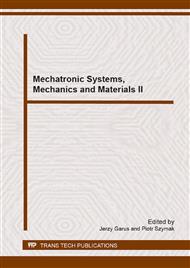p.223
p.234
p.245
p.252
p.258
p.265
p.273
p.280
p.287
The Characteristics of the Matrix Game Sensitivity of the Safe Passing of Ships at Sea
Abstract:
This paper describes application of elements of dynamic game theory for automation of the process of controlling moving objects, on an example of safe control of the own vessel in collision situations while passing encountered vessels. A method of determining safe game trajectory of the vessel has been presented in a form of a multi-stage matrix game of cooperating or non-cooperating objects of control. The method of dual linear programming has been used for the synthesis of the computer algorithm of control. The considerations have been illustrated with examples of a computer simulation, in Matlab/Simulink language, of safe trajectory of the vessel in a real situation at sea. Characteristics of sensitivity of the game control to the inaccuracy of information on the condition of the process and change of its parameters have been presented.
Info:
Periodical:
Pages:
258-264
Citation:
Online since:
October 2013
Authors:
Price:
Сopyright:
© 2014 Trans Tech Publications Ltd. All Rights Reserved
Share:
Citation:


